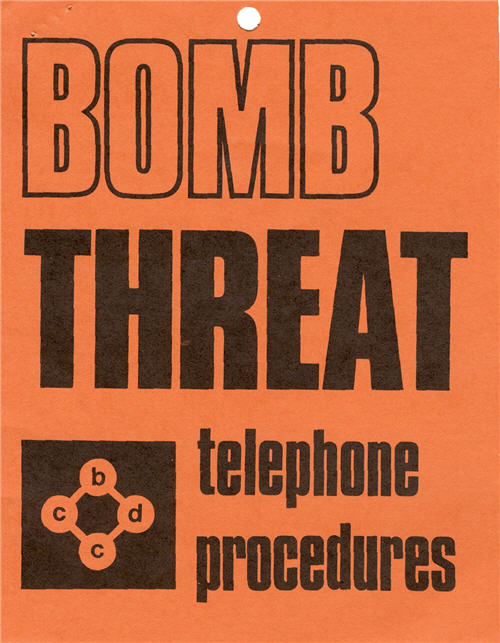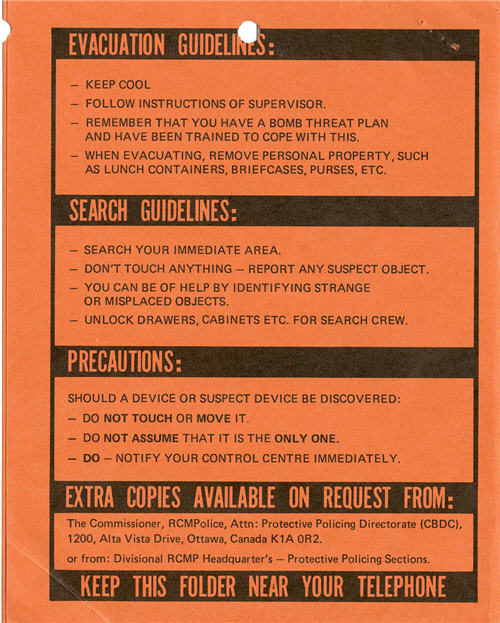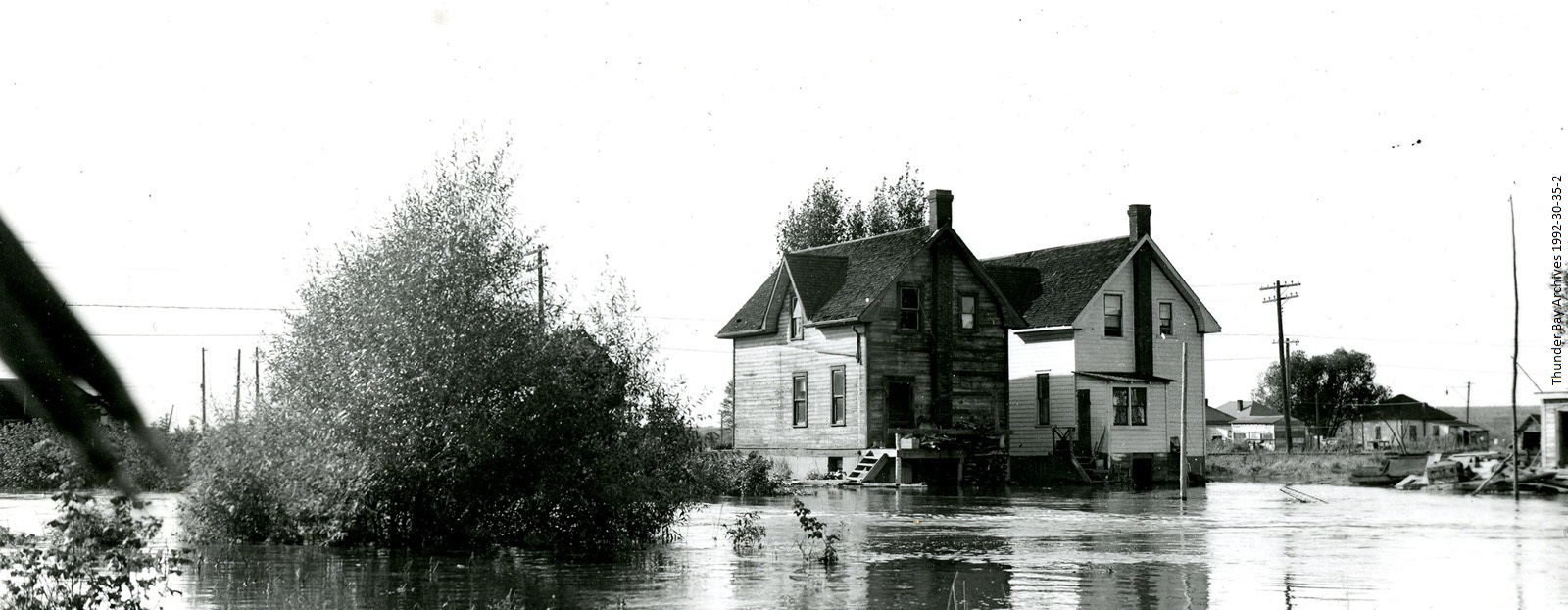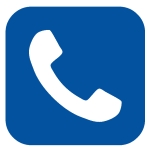
This brochure was issued by Canadian Bomb Data Centre in the late 1970s. The procedures here would have been used by City staff.

When a bomb threat is received:
- Listen
- Be calm and courteous
- Do not interrupt the caller
- Obtain as much information as you can
- Initiate call trace action (where possible) and notify your responsible authority by pre-arranged signal while the caller is on the line
- For telephone tracing, call: ___
Questions to ask:
- What time will the bomb explode?
- Where is it?
- Why did you place the bomb?
- What does it look like?
- Where are you calling from?
- What is your name?
Threat recipient's particulars:
- Name
- Section/Bureau/Department
- Person to contact
- Telephone number
Recorded data:
- Date
- Time
- Duration of call
Exact wording of threat:
Identifying characteristics:
- Sex
- Estimated age
- Accent (English, French, etc)
- Voice (loud, soft, etc)
- Speech (fast, slow, etc)
- Diction (good, nasal, lisp, etc)
- Manner (calm, emotional, vulgar, etc)
- Background noises
- Voice was familiar (specify)
- Caller was familiar with area

Evacuation Guidelines:
- Keep cool
- Follow instructions of supervisor
- Remember that you have a bomb threat plan and have been trained to cope with this
- When evacuating, remove personal property, such as lunch containers, briefcases, purses, etc.
Search Guidelines:
- Search your immediate area
- Don't touch anything -- report any suspect object
- You can be of help by identifying strange or misplaced objects
- Unlock drawers, cabinets, etc. for search crew
Precautions:
Should a device or suspect device be discovered:
- Do not touch or move it
- Do not assume that it is the only one
- Do notify your control centre immediately
Contact Us








